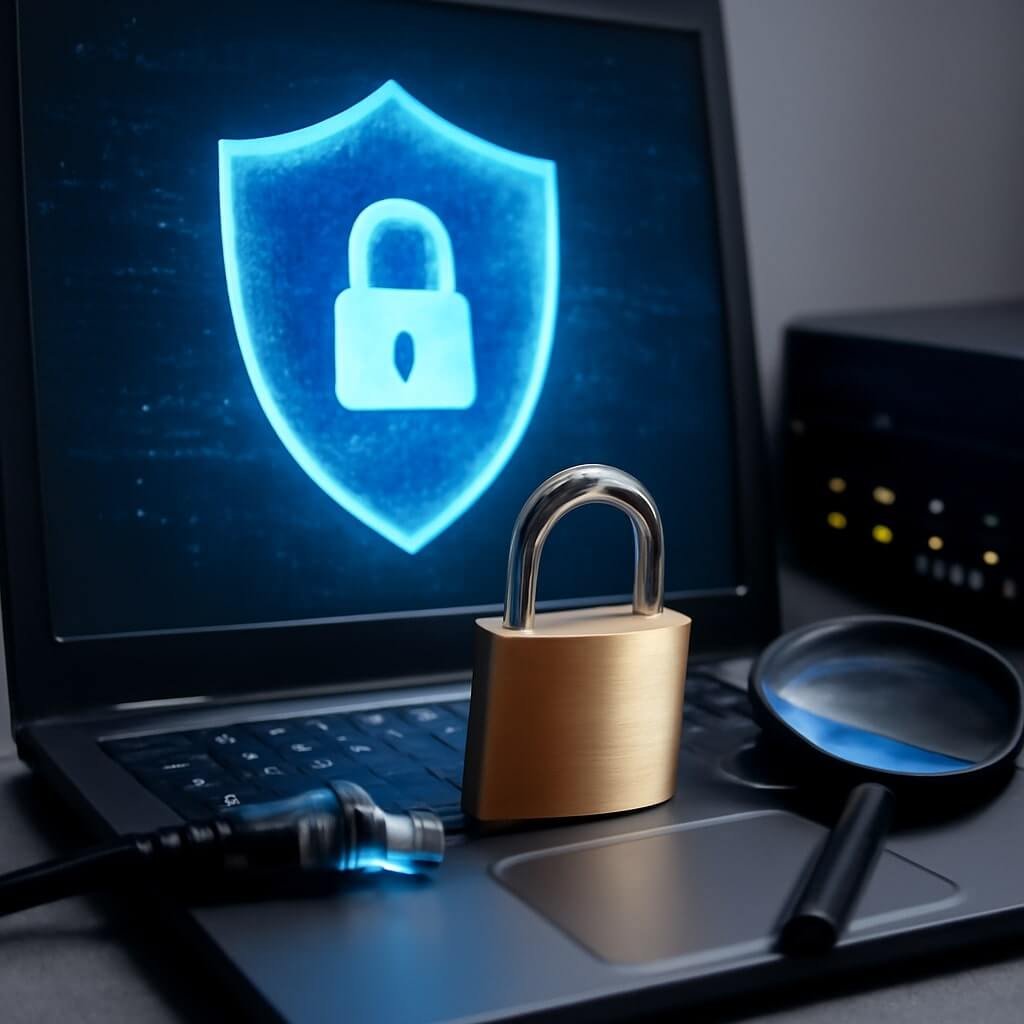In today’s digital landscape, understanding the key components of computer and network security is essential. Firewalls, encryption, access controls, regular updates, and proactive monitoring all play critical roles in safeguarding your data. Each element contributes uniquely to your overall security strategy, yet many overlook their interconnectedness. By exploring these components, you’ll uncover how they collectively bolster your defenses against the ever-evolving cyber threats that loom on the horizon. What might be missing from your security framework?
Key Takeaways
- Firewalls serve as the first line of defense against unauthorized access and cyber threats by filtering incoming and outgoing traffic.
- Encryption protects sensitive data in transit and at rest, rendering it unreadable to unauthorized users.
- Access controls manage user permissions, ensuring that only authorized individuals can access specific resources and sensitive information.
- Regular updates and patching are crucial for maintaining system integrity by addressing vulnerabilities and ensuring software is up to date.
- Proactive monitoring and incident response measures enable real-time threat detection and outline actions for effectively handling security incidents.
Importance of Firewalls in Network Security
Firewalls are essential components of network security, acting as the first line of defense against unauthorized access and cyber threats.
Understanding the different firewall types—such as packet-filtering, stateful inspection, and next-generation firewalls—enables you to choose the right protection for your network. Each type offers unique advantages in threat detection, helping identify and block malicious traffic effectively.
You should regularly update and configure your firewall settings to adapt to emerging threats, ensuring ideal security. Incorporating additional features like intrusion detection systems can further enhance your firewall’s capabilities.
The Role of Encryption in Data Protection
While firewalls serve as a critical barrier against external threats, protecting data in transit and at rest is equally important.
Encryption plays an essential role in this protection, ensuring that even if data is intercepted, it remains unreadable. You can use symmetric encryption for its speed and efficiency when dealing with large volumes of data; it employs a single key for both encryption and decryption.
On the other hand, asymmetric encryption, which uses a pair of keys, provides added security for sensitive transactions, like those involving personal or financial information.
By implementing both methods strategically, you can enhance your data protection measures, safeguarding against unauthorized access and potential breaches.
Access Controls: Managing User Permissions
To effectively safeguard your systems and sensitive information, access controls are vital for managing user permissions. They help you guarantee that only authorized individuals can access specific resources.
Start with user authentication, which verifies identities through methods like passwords or biometrics. This step is essential in preventing unauthorized access.
Next, establish permission levels tailored to your organization’s needs. Different roles require varying access rights, so implement a granular approach. For instance, a manager may need broader access than an intern.
Regularly review these permissions to adapt to any changes in personnel or job functions. By proactively managing access controls, you minimize risks and enhance your overall security posture, guaranteeing that sensitive data remains protected from potential threats.
Regular Updates and Patching Strategies
Regular updates and patching strategies are essential for maintaining the integrity of your computer systems and networks, as vulnerabilities can emerge at any time.
To protect against these threats, you should establish effective update schedules that guarantee timely deployment of patches. Regularly review your software and hardware inventory to identify components that require updates.
Establishing effective update schedules ensures timely patch deployment and helps identify components needing attention.
Implement a robust patch management system that prioritizes critical vulnerabilities, allowing you to address the most pressing risks first. Automate updates wherever possible to reduce human error and streamline the process.
Additionally, test patches in a controlled environment before full deployment, confirming compatibility and stability.
Monitoring and Incident Response Measures
After implementing regular updates and patching strategies, the next step involves establishing robust monitoring and incident response measures.
You need a proactive approach to incident detection, guaranteeing that potential threats are identified in real-time. Utilize advanced monitoring tools that can analyze network traffic and flag unusual activities.
Develop a thorough response planning framework that outlines specific actions for various incident types. This includes defining roles and responsibilities, communication protocols, and escalation procedures.
Regularly test your incident response plan through simulations to verify your team is prepared. By prioritizing these measures, you’ll enhance your organization’s resilience against cyber threats and minimize potential damage from security breaches.
Stay vigilant and ready to act swiftly when incidents arise.
Conclusion
Incorporating these key components—firewalls, encryption, access controls, regular updates, and monitoring—creates a robust security framework for your systems. By actively managing these elements, you not only protect sensitive information but also enhance your ability to respond to potential threats. Staying vigilant and proactive in your security measures guarantees that you’re prepared for evolving cyber challenges. Ultimately, prioritizing these strategies empowers you to safeguard your network and maintain the integrity of your data.





